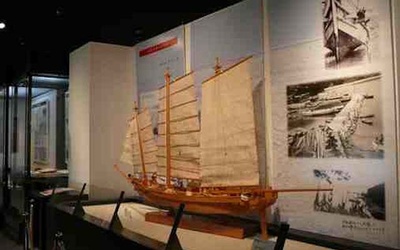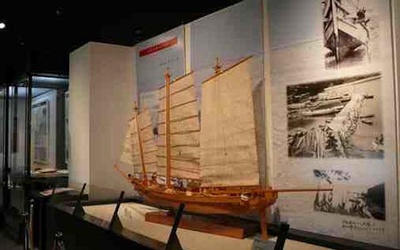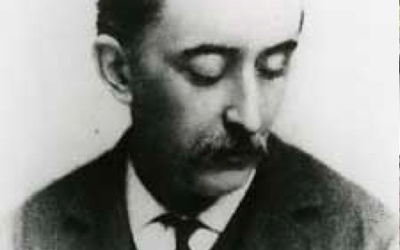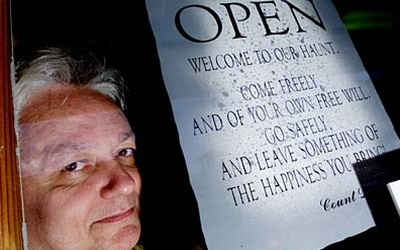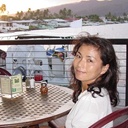
Kaori Akiyama
Kaori Akiyama é uma profissional de museu e pesquisadora nascida na província de Nagano, no Japão. Ela morou no Havaí de 1999 a 2009 e obteve um bacharelado em antropologia e um certificado de pós-graduação em estudos de museus pela Universidade do Havaí em Manoa. Durante esse período, ela também trabalhou em três museus, incluindo o Centro Cultural Japonês do Havaí (como pesquisadora) e o Museu Bernice Pauahi Bishop (como assistente de conservação).
Atualmente ela trabalha no Museu da Cidade de Matsumoto. Nas horas vagas, ela escreve artigos em japonês e inglês sobre a cultura e o povo do Havaí. Seu objetivo é familiarizar o povo japonês com o “verdadeiro” Havaí e seu povo, e aumentar a consciência global das conexões culturais entre o Havaí e o Japão.
Atualizado em fevereiro de 2011
Stories from This Author
An Exhibit That Brings Japanese Americans Into Japanese History - Part 3 of 3
30 de Novembro de 2011 • Kaori Akiyama
Read part 2 >>Section 3: A Cross Cultural View: The View From People Between Countries To me, the most confusing section of the exhibit was the one entitled “Foreign Correspondents in Occupied Japan,” although it also tried to express the theme of “people who were moving between countries” in the war era. Having no permission for residence in wartime, these correspondents were similar to Japanese in the U.S. at that time. However, the sudden change of the protagonists from “Japanese …
An Exhibit That Brings Japanese Americans Into Japanese History - Part 2 of 3
23 de Novembro de 2011 • Kaori Akiyama
Read part 1 >>Section 2: Repatriation The second section featured a major drama of the exhibition, from the time when the relationship between the U.S. and Japan began to decline until the end of WW2, entitled “Immigrants and the Outbreak of War Between the U.S. and Japan —Anti-Japanese Movements, Incarceration and Repatriation.” Although the section covers a long period with important historical events, the narrative relied on the presence of the Repatriation Ships to show the dynamism of the movement …
An Exhibit That Brings Japanese Americans Into Japanese History - part 1 of 3
16 de Novembro de 2011 • Kaori Akiyama
IntroductionThe exhibit entitled Japanese Immigrants in the United States and the War Era at the National Museum of Japanese History, Chiba, Japan closed on April 3, 2011 after a year-long opening to the public. It was a special exhibit to commemorate the opening of the Sixth Exhibit Room of the museum in March 2010, which displays contemporary history. Some might think that this national museum mainly focuses on Japanese history, meaning events that took place in Japan. However, this project …
Searching the Home of Mujina: For Glen Grant - Part 3
4 de Março de 2011 • Kaori Akiyama
Read Part 2 >>During the Edo Period (1603-1868), there was a great flowering of ghost stories in many areas ranging from art to entertainment. Reider (2000) explains the psychology of the Edo people: because travel abroad was forbidden, there was a heightened perception of foreign lands, particularly China, as exotic places where mysterious things were believed to happen (p. 278). The parents of the issei grew up in late Edo culture and passed its longing for the cultural other to …
Searching the Home of Mujina: For Glen Grant - Part 2
25 de Fevereiro de 2011 • Kaori Akiyama
Read Part 1 >>>The theme of the revengeful female spirit is still alive today in Japanese films. Probably the best-known recent example of a popular Japanese horror film in America is The Ring,1 (2002) which remakes the Japanese original for American audiences. The story contains a faceless female ghost with beautiful long hair that covers her face. She is shown on a strange video and anyone who sees the video dies in a certain number of days. There may be some echoes of …
Searching the Home of Mujina: For Glen Grant - Part 1
18 de Fevereiro de 2011 • Kaori Akiyama
One sunny day in August, I was on the way to go back to my new place in Kaimuki near the University of Hawaii. That day, I took a walk to the Kaimuki Shopping center to acquire some household implements for my new place. I had four plastic shopping bags and felt thirsty under the bright sun, so I decided to take a rest at a McDonald’s. Outside the McDonald’s on the Waealae there was a small triangle park having …


